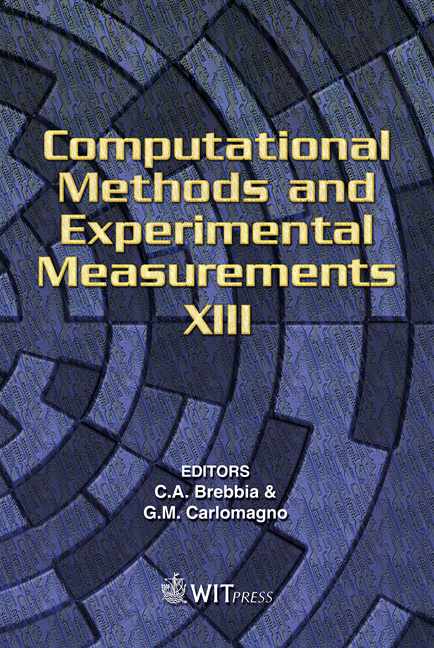Plate Distance Effect On Mixed Convection In Horizontal Channels Heated From Below
Price
Free (open access)
Transaction
Volume
46
Pages
12
Published
2007
Size
1,842 kb
Paper DOI
10.2495/CMEM070411
Copyright
WIT Press
Author(s)
G. Foglia, O. Manca & S. Nardini
Abstract
Mixed convection in air in a horizontal channel with the lower wall heated at uniform heat flux is investigated experimentally. The study is accomplished for several heat fluxes, forced air velocities and two distances between the horizontal plates, b=20 mm and b=40 mm. The Reynolds numbers are investigated between 5.0 and 250, these being in the laminar regime. The Richardson number Ri=Gr/Re2 holds values in the range 3.0–7.4x104. The effect of the channel gap is investigated by flow visualization and wall temperature distribution. Keywords: mixed convection, electronic cooling, thermal control, experimental investigation. 1 Introduction Recently great attention has been focused on mixed convection in open-ended cavities for their wide use, such as thermal control of electronic equipments, chemical vapour deposition (CVD) of solid layer and solar collectors. Buoyancy force due to the heating of the lower cavity wall induces secondary flows hence the local heat transfer increases. The onset point of the secondary flows is important because it delineates the region after which the twodimensional laminar flow becomes three-dimensional. Understanding, manipulating and controlling the secondary motions in openended cavities are important. There is a need for further numerical and experimental investigations on three-dimensional mixed convection in cavities and particularly in horizontal channels. The relevant literature on mixed convection in horizontal channels heated from below has been recently reviewed in [1, 2].
Keywords
mixed convection, electronic cooling, thermal control, experimental investigation.





